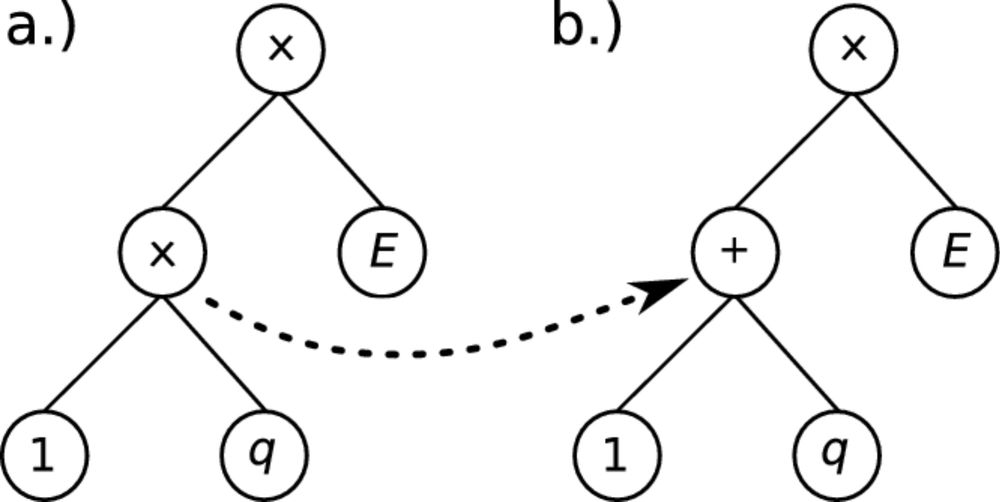
Two new Sections are open for submissions in GPEM:
* Comments and Correspondence: link.springer.com/collections/...
* Perspectives and Vision: link.springer.com/collections/...
@gpem.bsky.social
Genetic Programming and Evolvable Machines journal https://link.springer.com/journal/10710 Editor-in-chief Leonardo Trujillo bsky feed maintained by James McDermott

Two new Sections are open for submissions in GPEM:
* Comments and Correspondence: link.springer.com/collections/...
* Perspectives and Vision: link.springer.com/collections/...

And including:
Introducing look-ahead into relocation rules generated with genetic programming for the container relocation problem
Marko Ðurasević, Mateja Ðumić, Francisco Javier Gil Gala and Domagoj Jakobović
link.springer.com/article/10.1...

Including:
On fitting numerical features into probabilistic distributions to represent data for fuzzy pattern trees
Allan de Lima, Juan FH Albarracín, Douglas Moto Dias, Jorge Amaral, and Conor Ryan
link.springer.com/article/10.1...

Including:
Quality-diversity in problems with composite solutions: a case study on body–brain robot optimization
Eric Medvet, Samuele Lippolis, and Giorgia Nadizar
link.springer.com/article/10.1...

New special issue of GPEM on Evolutionary Computation in Art, Music and Design!
Edited by Penousal Machado and Juan Romero
link.springer.com/article/10.1...

New book review, freely available in GPEM:
“Reversible world of cellular automata” by Kenichi Morita, reviewed by Tomas Rokicki
link.springer.com/article/10.1...

GPEM Journal sends acknowledgements and thanks to recent reviewers (too many to list here!):
link.springer.com/article/10.1...
GPEM Journal has a new CFP for a special issue in Generative AI and Evolutionary Computation for Software Engineering!
This will be edited by Dominik Sobania
See Leo's blogpost:
gpemjournal.blogspot.com/2025/06/call...
And special issue page:
link.springer.com/collections/...

* Aidan Murphy, Mahsa Mahdinejad, Anthony Ventresque & Nuno Lourenço, An investigation into structured grammatical evolution initialisation: link.springer.com/article/10.1...
02.07.2025 10:54 — 👍 0 🔁 0 💬 0 📌 0
Papers:
* Leon Ingelse, J. Ignacio Hidalgo, J. Manuel Colmenar, Nuno Lourenço & Alcides Fonseca, A comparison of representations in grammar-guided genetic programming in the context of glucose prediction in people with diabetes: link.springer.com/article/10.1...
GPEM journal has a new special issue on "twenty-five years of grammatical evolution"!
Edited and with an introduction by Mahdinejad, Murphy and Ryan.
Special issue: link.springer.com/collections/...
Introduction: link.springer.com/article/10.1...
Machine learning assisted evolutionary multi- and many-objective optimization by Saxena, et al. (review by Saltuk Buğra Selçuklu ) link.springer.com/article/10.1...
29.04.2025 19:36 — 👍 0 🔁 0 💬 0 📌 0Artificial General Intelligence by Julian Togelius, (review by Vicente Martin Mastrocola) link.springer.com/article/10.1...
Symbolic Regression by Kronberg et al., (review by Bill La Cava ) link.springer.com/article/10.1...
Automatic Quantum Computer Programming: A Genetic Programming Approach by Lee Spector (review by Michel Toulouse), link.springer.com/article/10.1...
Ant Colony Optimizaton by Dorigo and Stutzle (review by Katya Rodríguez Vázquez) link.springer.com/article/10.1...
Evolutionary Robotics by Nolfi and Floreano, (review by Takashi Gomi) link.springer.com/article/10.1...
Foundations of Genetic Programming by Langdon and Poli, (review by Richard J. Povinelli) link.springer.com/article/10.1...
A lot of book reviews in GPEM Journal, old and new, which are now fully open access!
29.04.2025 19:36 — 👍 0 🔁 0 💬 1 📌 0
New book review at GPEM:
Book: "Symbolic Regression" by Kronberger et al
Review by La Cava
link.springer.com/article/10.1...
#geneticprogramming

Our GPTP from last year is out! Lexicase Selection Parameter Analysis: Varying Population Size and Test Case Redundancy with Diagnostic Metrics link.springer.com/chapter/10.1... #geneticprogramming
04.03.2025 17:24 — 👍 5 🔁 2 💬 0 📌 0
Editorial introduction by Moraglio et al: link.springer.com/article/10.1...
09.04.2025 15:58 — 👍 1 🔁 0 💬 0 📌 0Geometric Semantic #geneticprogramming was a big breakthrough in GP in 2012. The relationship between syntax and semantics is - in one way - easy to understand and take advantage of. 10 years later (!), here is the GPEM special issue.
Special issue collection: link.springer.com/collections/...

New paper in GPEM on requirements engineering:
"RSCID: requirements selection considering interactions and dependencies", by Keyvanpour et al.
link.springer.com/article/10.1...
#geneticprogramming
Now that you've finished CEC revisions... and finalising EuroGP camera-ready.. and you have GECCO acceptance decisions... and you've finished GECCO workshop submissions...
...keep up the momentum to get your paper ready for a GPEM submission!
#geneticprogramming
New book review in GPEM!
Book: The science of soft robots, Suzumori et al.
Review by: Medvet & Salvato
link.springer.com/article/10.1...
@ericmedvetts.bsky.social

"Constraining genetic symbolic regression via semantic backpropagation" by Reissman et al in GPEM
#geneticprogramming
link.springer.com/article/10.1...

New book review at GPEM
link.springer.com/article/10.1...
#geneticprogramming

The special issue on highlights of 2023 #geneticprogramming events, edited by Pappa, Giacobini, Ting Hu, and Jakobović is out:
link.springer.com/article/10.1...
GECCO paper reviews are due in 1 hour!
(poster reviews are due this time next week)

New paper in GPEM: "Memetic semantic boosting for symbolic regression"
Leite & Schoenauer
link.springer.com/article/10.1...
#geneticprogramming

New feature! PySR v1.4 lets you define a template expression to optimize that both has learnable parameters AND learnable expressions:
14.02.2025 15:22 — 👍 10 🔁 2 💬 1 📌 0We're excited to announce the first Evolving Self-organisation workshop at GECCO 2025!
Submission deadline: March 26, 2025
More information: evolving-self-organisation-workshop.github.io